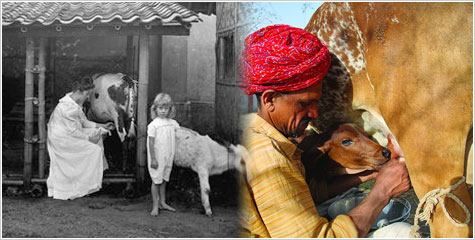Samsung has added an enhanced version of the GALAXY Ace to its Android portfolio, with the new GALAXY Ace Plus. Based on..
Europeans and Indians as descendants from a common milk-drinking ancestor within the last 7,500 years.

Discovery has reported a shared genetic signature marks that many Europeans and Indians are descendants from a common milk-drinking ancestor within the last 7,500 years. The majority of Europeans and Indians who can drink milk share the mutation known as -13910T. Toomas Kivisild of Cambridge University, senior author of the study, said in a press release that the -13910T mutation was also common in India – especially in those populations with a tradition of milk drinking. He also added that but by looking at nearby genetic regions it can be shown that the Indian -13910T has the same origin as that found in Europeans. The mutation was only found in certain segments of the Indian population. People with no history of pastoralism didn't have the -13919T mutation.
“Genetic data doesn’t support some sort of large migration of people from Europe to India in the last 10,000 years. What’s more likely is that just a few migrants carried this mutation to India, and then it spread quickly,” said co-author Mark Thomas of University College London.
All human babies can drink milk because they produce an enzyme called lactase, which breaks down milk sugar or lactose. But only about a third of the world's adults can drink milk without suffering abdominal pain, and other symptoms of lactose intolerance. The genetic mutation that allows adults to drink milk, called lactase persistence, seems to have evolved separately in Europe, Africa, and the Middle East. But until now, the source of lactase persistence in India, the world's largest drinker and producer of milk, was a mystery.
Share Your View via Facebook
top trend
-

Samsung Galaxy Ace Plus now In Market for Rs 16300
-

ISRO successfully places four satellites in orbit
ISRO, Indian Space Research Organisation, has successfully launched four satellites from Sriharikota in Andhra Pradesh inc..
-

When a Gujarati replied to the 16 Questions asked by Arvind Kejriwal to Narendra Modi
While it is praiseworthy to ask questions in a democray, and make the politicians in power accountable for the work they..
-

Smriti Irani arrested in jammu
The Bharatiya Janata Party sponsored nationwide protest against the inept policies and corruption of the Congress led Un..
-

NDTV juggles funds, shares abroad, avoids tax, violations of Indian tax and corporate laws
NDTV, through its foreign subsidiaries, is suspected to be indulging in gross violations of Indian tax and corporate laws...
what next
-
-
"Coal allocations since 1993 are arbitrary and illegal", Says Supreme Court
-
Palestine, 6 billion people and second hand opinions
-
Malegaon 2006 vs. Malegaon 2008 - Blast Politics
-
Who will investigate Chidambaram & Co for the Dabhol Loot?
-
Narendra Modi prepares to climb the ramparts of the Red Fort
-
The Great Jindal Swindle
-
AAP's insidious anti-Hindu agenda
-
Nagma - Sonia Gandhi's Star Soldier
-
Aam Aadmi Party : Anti-Modi stalking horse
-
What in God's name is Teesta Setalvad's agenda?
-
-
-
Time to rethink : Saffron surge and the secular debacle - Sri Sri Ravi Shankar
-
India's Wishlist for Prime Minister Narendra Modi
-
My first meeting with Narendra Modi - Sri Sri Ravi Shankar
-
Telangana - Divide and Rule?
-
Myths vs Facts about RSS
-
The Two States: Telangana and Seemandhra
-
Answering Media on Questions to Narendra Modi, but will they venture into responding these queries?
-
#AAPCon : Dilli ke log ban gaye Mamu
-
Secularism is just synonymous with Sanatan Dharm
-
Beware of the Hoax called Aam Aadmi Party
-











Comments (Leave a Reply)